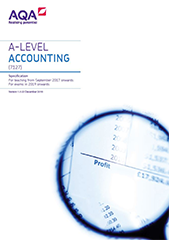3.17 Interpretation, analysis and communication of accounting information
Content |
Additional information |
|---|---|
How accounting techniques, measures and ratios are used to analyse and interpret accounting information (both financial and management) and the limitations of using financial statement and ratio analysis when assessing business performance. |
Techniques, measures and ratios include those listed in analysis and evaluation of financial information and also investors’ ratios:
|
How performance is evaluated both internally and across accounting periods and externally in comparison to competitors. |
The focus on performance could include:
|
The difference between cash and profits and the effect of transactions on profitability and liquidity. |
|
The interests of stakeholders and importance of effective communication to both internal and external stakeholders. |
Internal stakeholders are:
External stakeholders are:
Value of published accounts to relevant stakeholders. |
The impact, advantages and disadvantages of systems of recording data. |
|
The critical assessment of recommendations and their impact on stakeholders, the local and national economy and the environment. |
